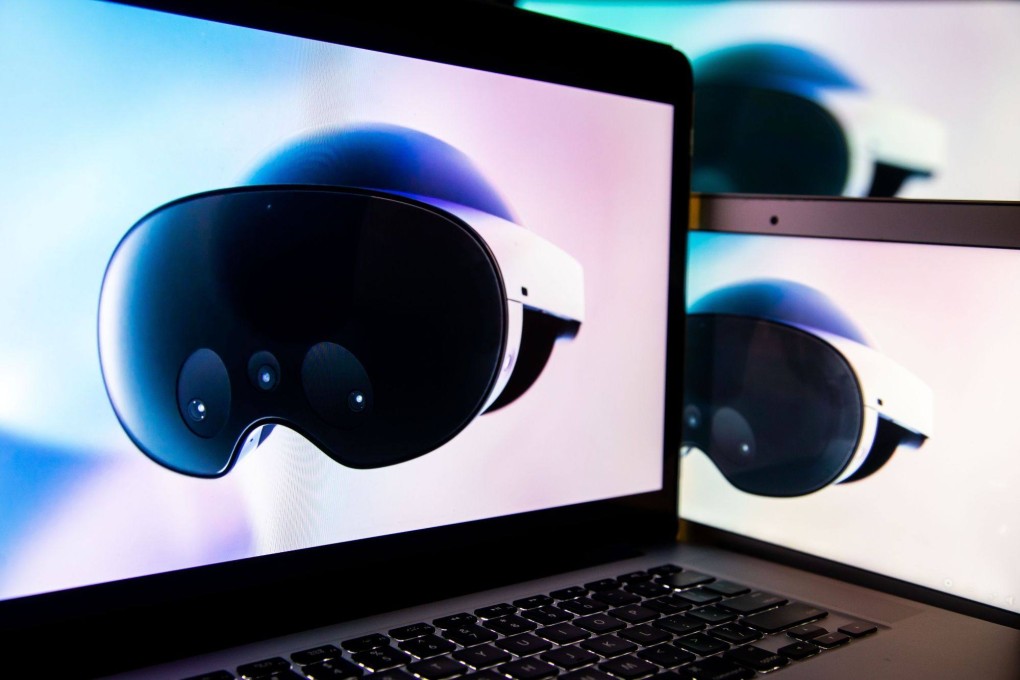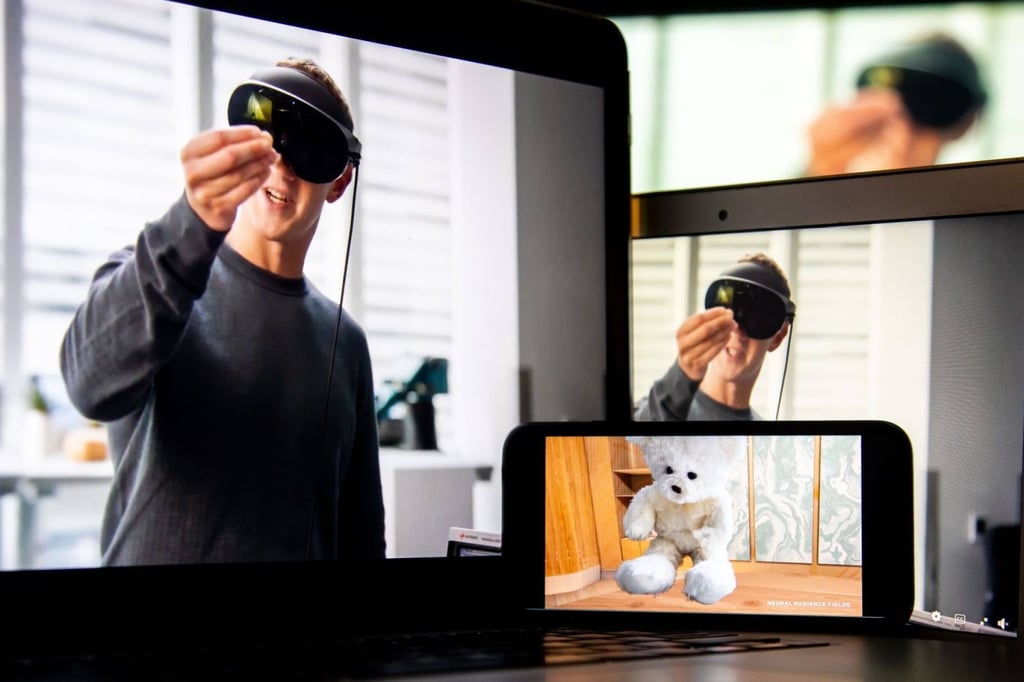Advertisement
Facebook parent Meta debuts US$1,500 virtual reality headset targeting professionals, remote workers using Microsoft platforms
- The Meta Quest Pro is the company’s latest offering in a product line previously marketed as Oculus
- With the new device, Meta is seeking to broaden its audience and transcend the notion that virtual reality is primarily the realm of gamers
Reading Time:3 minutes
Why you can trust SCMP
0

Meta Platforms on Tuesday unveiled its newest virtual reality headset, a foray into the world of high-end VR devices designed to entice creators and working professionals to adopt Mark Zuckerberg’s vision for an immersive digital future.
The Meta Quest Pro is the company’s latest offering in a product line previously marketed as Oculus. The Quest Pro includes a number of technological advancements from the company’s Quest 2 headset, which was launched in late 2020.
The new headset is also much pricier than its predecessor – it will cost US$1,500, or three times the price of the Quest 2 – in part because the company is targeting more serious working professionals.
With the new device, Facebook parent Meta is seeking to transcend the notion that VR is primarily the realm of gamers, an effort to broaden its audience. Meta’s Quest 2 headset has sold an estimated 15 million units.

“It’s work-focused,” Meta chief executive Zuckerberg told a small group of reporters in late September. “The ideal customers for this [are] gonna be either people who just want the highest-end VR device – so enthusiasts, prosumer-type folks – or people who are trying to get work done.”
Advertisement
Select Voice
Choose your listening speed
Get through articles 2-3x faster
1.1x
220 WPM
Slow
Normal
Fast
1.1x